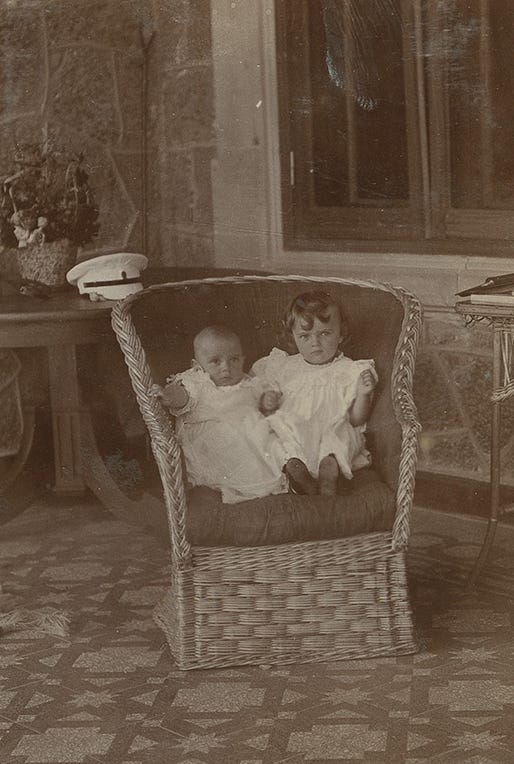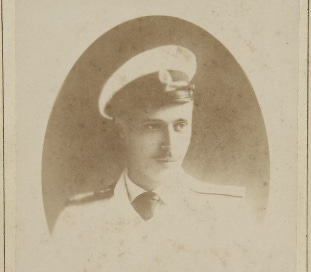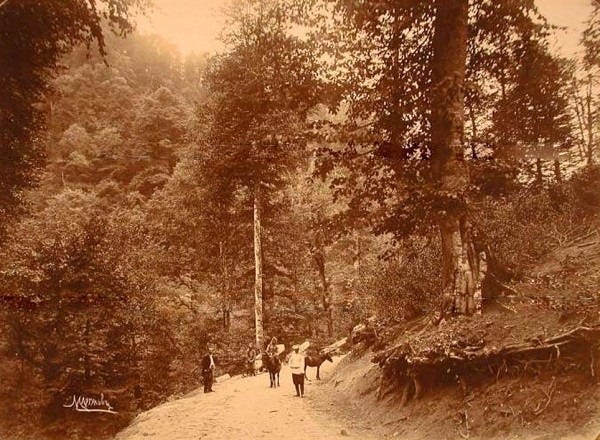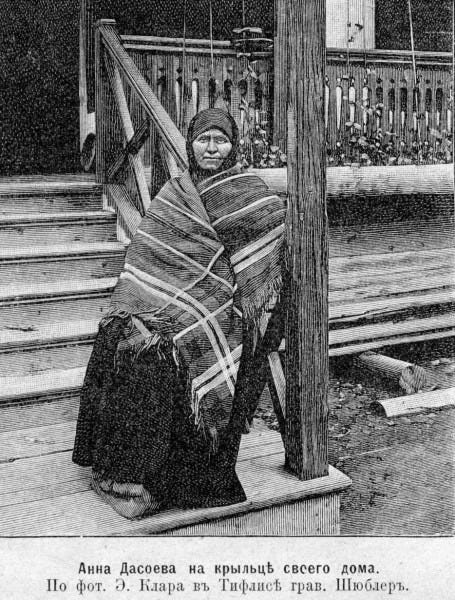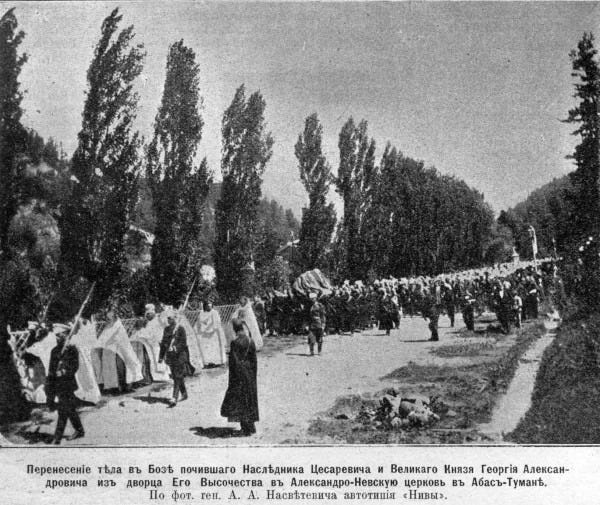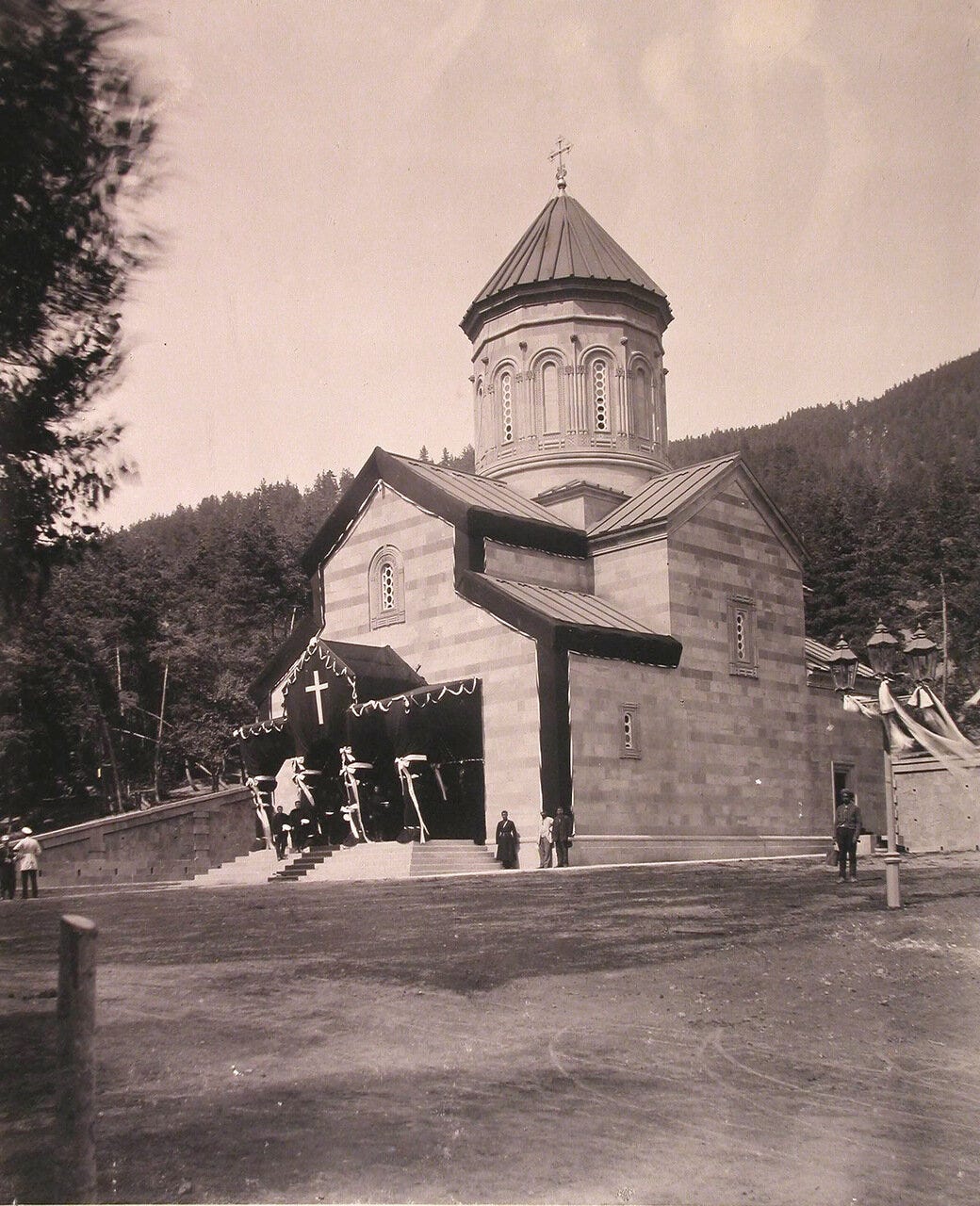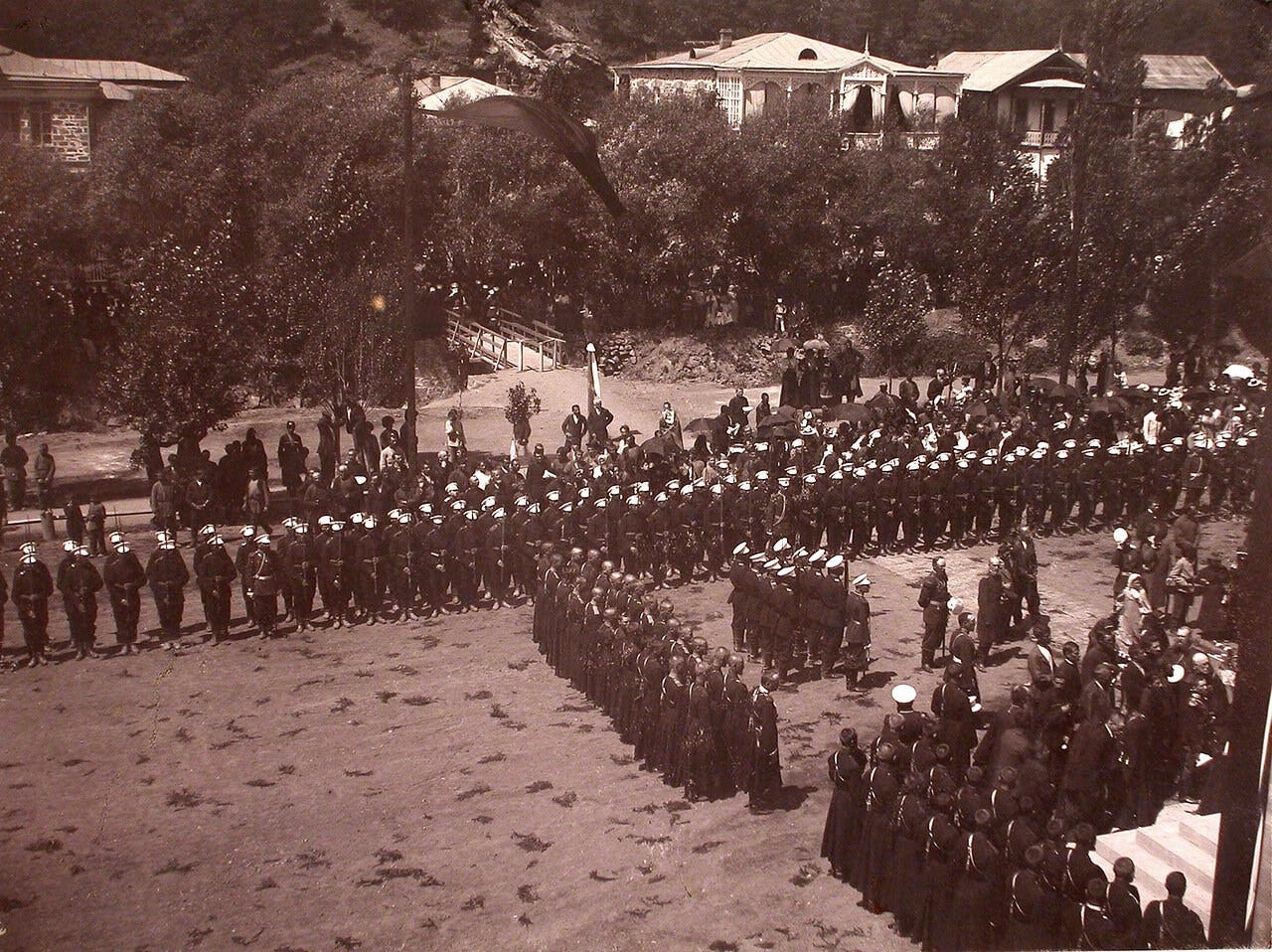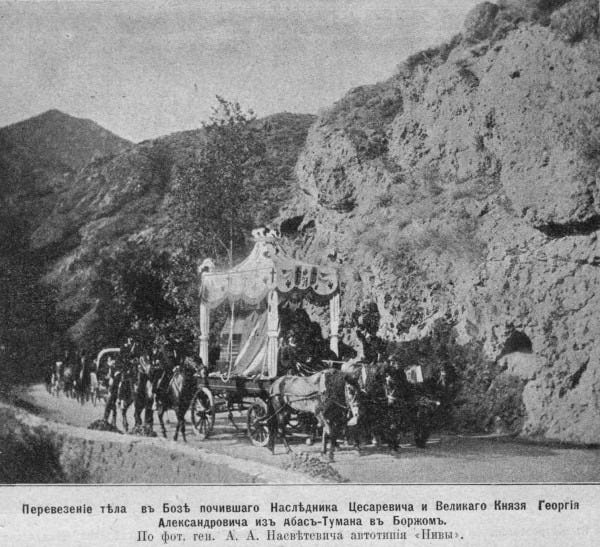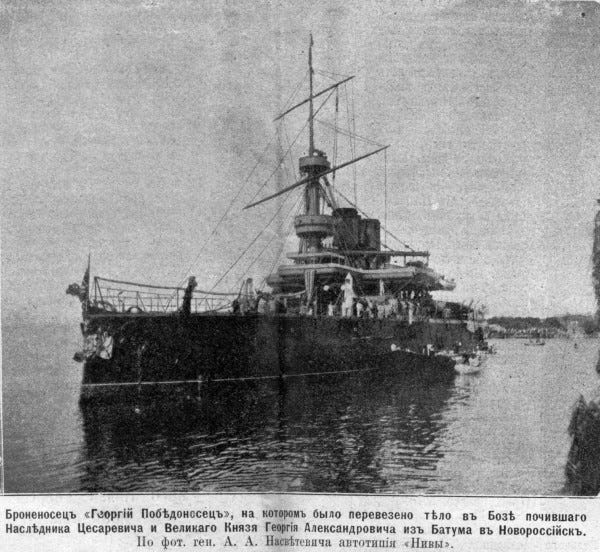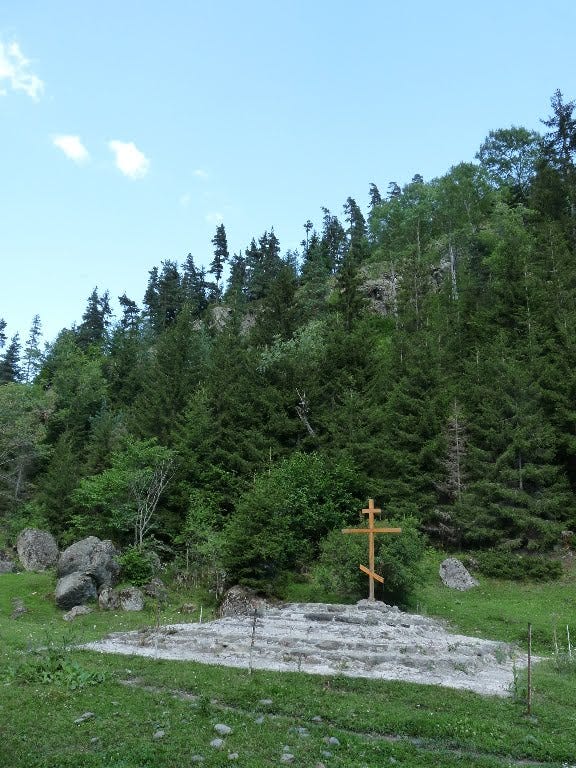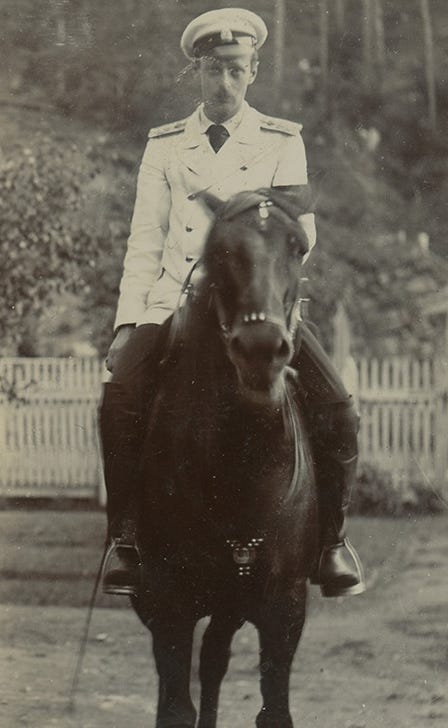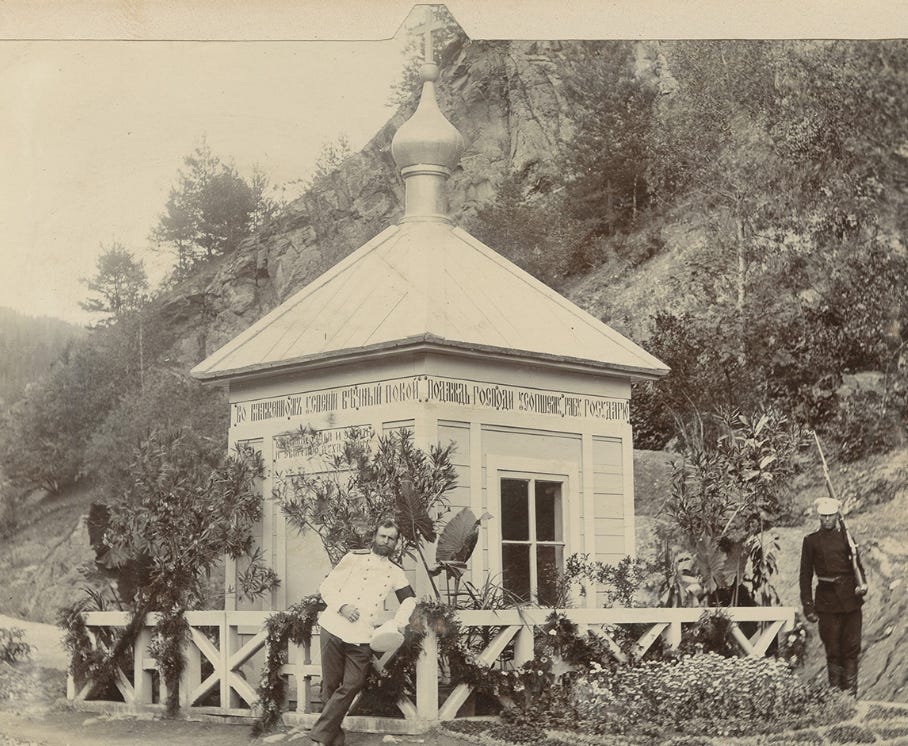Grand Duke George Alexandrovich
A translated article from Kavkaz from the time of his death, illustrated with rarely seen photos
George Alexandrovich is an often-overlooked Grand Duke, maybe because of his early death, but we have an on-going interest in him, due to some private information we once received regarding his life in Georgia. This article appeared behind the paywall we once had on this Substack, but we are reproducing it here publicly for the first time.
This article appeared in a truncated form in the popular magazine Niva, and it’s the version most people read at the time of George’s death. The complete article was published in the newspaper Kavkaz which was in print from 1846 until 1917. Kavkaz started as a weekly journal but gradually increased its circulation until it became a daily publication in 1877. From about 1850, the newspaper became the property of the Office of the Viceroy of the Caucasus and gradually became the official press organ of the government, with overlapping content from both the wider Empire and the locality; the hope was that the newspaper would foster understanding between the cultures of the Caucasus, both native and imported.
The photos embedded in the article are from Niva, GARF, and various private collections. Any errors in translation are King and Wilson’s alone.
At the end of the article, we are including a gallery of images from the archive of photographer Sergei Alexandrovich Borakchiev, who frequently accompanied George Alexandrovich on his trips around the Abastuman area and took many photos which remain remarkably clear and present.
++++
An article from the newspaper Kavkaz (Caucasus), July 1899:
“On Monday, June 28, 1899, the Heir Tsesarevich, after ordering up his tricycle with a gasoline engine, walked in the palace garden, inspecting the flower beds. At 9 am, he headed towards Zekar Pass on the tricycle. The weather was good with a light wind. The Heir Tsesarevich was driving very fast (His Highness's tricycle can reach speeds up to 35 versts per hour [23 miles an hour]).
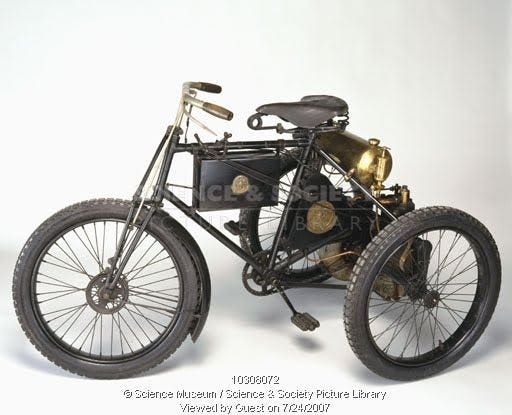
Driving up the road behind the palace of the Grand Dukes George and Alexander Mikhailovich,the Heir encountered a cart traveling from Abastuman towards the estate of Count Olsufiev. Anna Filippovna Dasoyeva was driving the cart accompanied by her employee Athanasius Semenikhin, when they noticed the Tsesarevich and they turned the cart aside, freeing the road for the passage of the Grand Duke. His Imperial Highness, smiling graciously, deigned to greet those who were on the cart with a bow, and quickly continued on his way.
After this meeting, the Dasoyeva cart drove along the edge of the road, giving way for the Tsesarevich to return freely. According to Anna Filippovna Dasoyeva, less than ten minutes after their meeting, she saw His Imperial Highness, returning on the tricycle with much reduced speed. Stopping about 35 fathoms [210 feet] from where there is now a cross, he leaned over and spat thick blood. Dasoyeva, noticing this and the bloodied jacket on the Heir Tsesarevich, immediately sent Semenikhin to His Highness’s palace for help. She herself ran to the Grand Duke, supported him with her arm and asked: “What's wrong with Your Highness?”
“Nothing,” replied the Tsesarevich in a weak voice, and at that time His Highness's legs gave way. Dasoyeva quietly and carefully lowered the August Patient to the ground, placing him on his side, with the Tsesarevich's head on a stone elevation, and then she herself, grabbing an empty jug from under the bench in her cart, ran to the river, which flows approximately three fathoms [18 feet] from this place.
After returning with the water, she began to pour it on the head of the suffering Tsesarevich, refreshing him and cleaning the gore from his mouth. At Anna Dasoyeva’s suggestion that he drink some water, the Heir Tsesarevich, gazing fixedly at the woman, quietly nodded his head and, with a weak movement of his hand, expressed his consent to this; but His Highness could not swallow any water.
Dasoyeva noticed, to her dismay, that spots began to appear on the face of the Most August Patient; to her, they did not foreshadow a successful outcome. And then, at 9:35am, His Imperial Highness The Heir Tsarevich, Grand Duke George Alexandrovich, quietly and without suffering passed from this world. From the moment the Grand Duke stopped the tricycle and descended from it, no more than five minutes had passed before His Highness died.
In the meantime, Semenikhin had reported the event at the palace and the physician Aikanov and the Heir’s retinue ran to the site of the tragedy. The Grand Duke’s body was transported to the palace. A tent was set up on the place where he died, where the grass was stained with the blood of His Highness, and a guard was placed on watch.
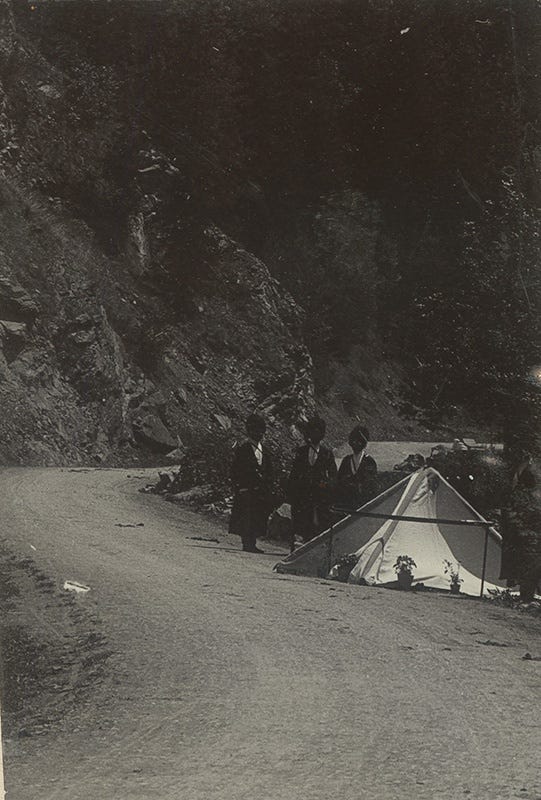
On the next day, June 29, at 10 am, an autopsy took place on the body of the late Tsesarevich and he was found to have died due to a sudden rupture of a pulmonary vessel and the consequent severe hemorrhage in his throat. Following the autopsy, the Heir’s body was embalmed, this being performed by a senior resident of the Semenovskiy hospital in St. Petersburg, a man called Birulya, who was temporarily in Abastuman, taking the waters. All events of this day took place in the presence of the Governor of Tiflis. I.N. Svechin, the local commandant, Major-General Rylsky, the physician Aykanov, and a local prosecutor.
The funeral of the Heir Tsarevich took place in the church of Alexander Nevsky, performed by Archimandrite Hermogenes, who arrived from Tiflis; he gave a fiery and rousing sermon. The last farewell to The Heir was captured in many photographs and a movie was also shot. Then, accompanied by his convoy, retinue, and other persons, the mourning train departed for Mikhailov, where the nearest railway station was located.
On orders from the highest authority, it became known that the Grand Duke Nikolai Mikhailovich would accompany the remains of the late Tsesarevich from Abastuman to St. Petersburg. The journey was to begin on July 6th. Until that day, and throughout all the days before the departure, memorial services were conducted by the confessor of the Tsesarevich, the priest Rudnev, who acted in co-service with the surrounding parish priests, both in the palace of the Grand Duke and at the very place of death, which was quickly enclosed, marked with a cross and covered with fresh flowers.
Throughout the days from the time of the tragedy on June 28, and up to the time of the final services in Abastuman on July 6, the local and neighboring Russian and Muslim populations flowed to this place, making pilgrimages from various places on foot. From the 30th of June, the people were allowed daily into the palace to worship by the remains of His Highness. The late Tsesarevich, dressed in a naval uniform, rested in a temporary coffin, which in turn was covered with a naval flag, and the whole was decorated with flowers.
On July 6, on the 9th day of death, the remains of the Tsesarevich were transferred from the palace to the Alexander Nevsky Church. The coffin was borne out of the palace by the hands of the Grand Duke Nikolai Mikhailovich, Adjutant General, Prince Golitsyn, Prince Dolgoruky, Count Olsufyev, Lieutenant Generals Amilakhvari and Amirejibi, and was accompanied by the physician Aikanov and others of the retinue.
In the palace garden, the coffin was placed on golden stretchers raised and carried by the ranks of the Tsesarevich’s convoy. The troops took up the guard, the convoy choirs played "God is glorious."
At 10 o'clock the procession moved off towards the church. In front walked the master of ceremonies with a rod, then an aide-de-camp with the valet, then banners, choristers, and the clergy in light robes. The coffin was of forged gold with gold emblems, covered with a gold covering and the personal flag of the Heir Tsesarevich; convoy officers and soldiers of the Tengin Regiment walked along the sides. Behind the coffin were officers, the Grand Duke Nicholas Mikhailovich, the governor-general, the Tsesarevich’s retinue, doctors, officials of various departments, deputations, clergy of different languages and traditions, people carrying wreaths, servants of the Tsesarevich, troops, convoy, and more soldiers of the Tengin and Khopersky Regiments. The procession stretched for half a mile, and moved slowly, accompanied by musicians playing the funeral march. The procession arrived at the church at 11 o’clock.
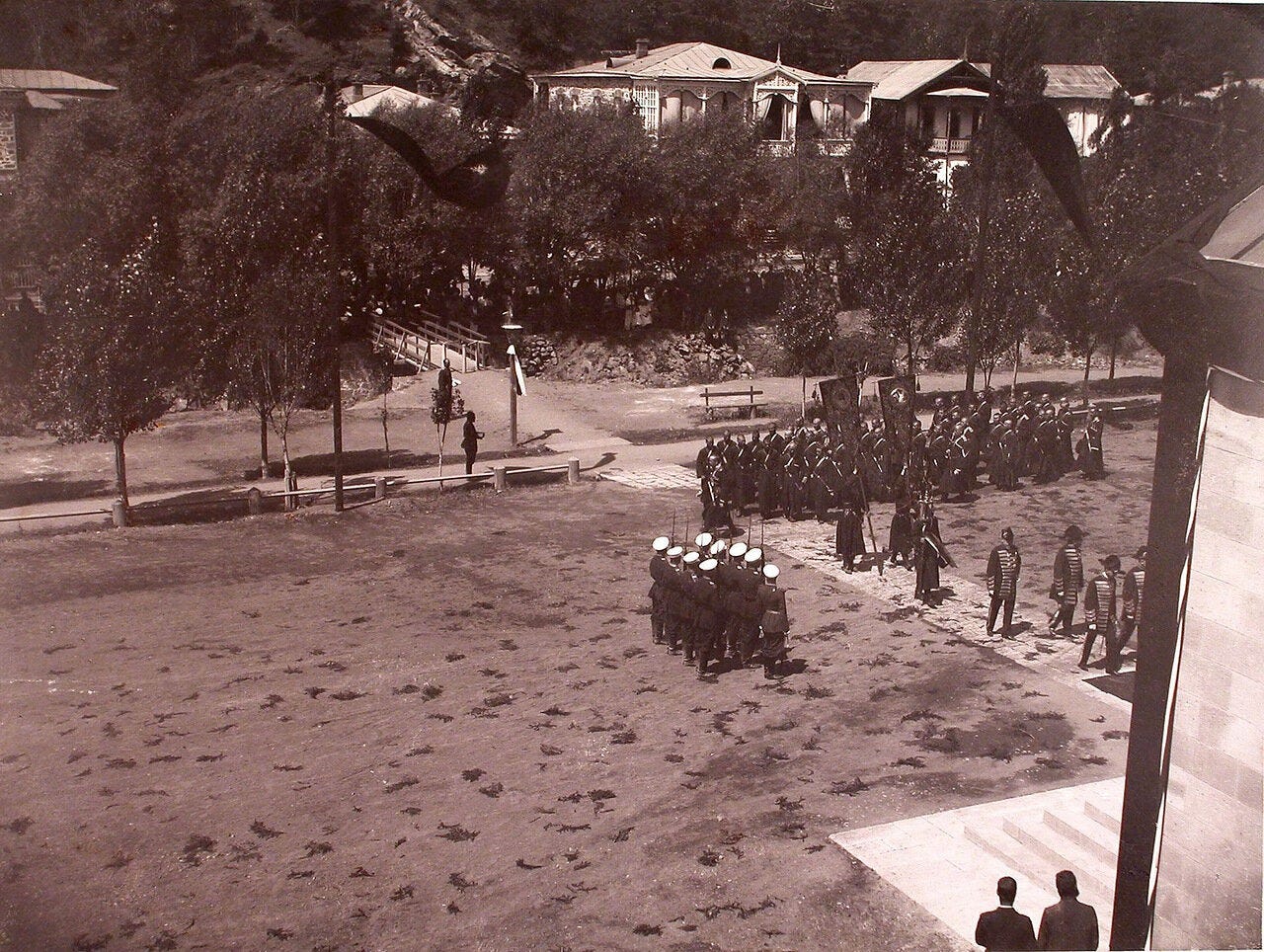
Inside the walls, the coffin was lifted by the hands of the Grand Duke and the generals and placed on a dais under a canopy with a grand ducal crown of fresh flowers. At the end of the requiem liturgy, the court clergy performed a memorial service in the presence of the Grand Duke, the generals and authorities, officials of all departments and Anna Dasoyeva, who was given a place of honor as the one present at the last minutes of His Highness, and the one who received his last gaze.
Generals and court officials were on duty at the tomb. After the service, people were allowed to worship in the church. Wreaths were laid on the coffin. The church was open all night, and all the time, the clergy were reading the Gospel at the coffin.
At 4:15 am on July 7, the Grand Duke Nikolai Mikhailovich and the funeral retinue arrived at the church. After services, the coffin containing the remains of the Tsesarevich was carried out and put on a hearse. The procession, led by the master of ceremonies and the clergy, left Abastuman at 4:40. am and went in the direction of Borzhom, accompanied by the troops of the garrison.
In Borzhom, the coffin with the body of the late Heir Tsesarevich, accompanied by the Grand Duke Nikolai Mikhailovich, the Prince Commander Golitsyn, the clergy and other superiors, entered an emergency train, which then departed for Batum, where it arrived on the pier of the Russian Shipping Company at about 8 o'clock in the morning.
At the same time, the battleship Georgii Pobedonosets [George Victory – or perhaps Victorious George], escorted by the Black Sea squadron, approached Batum, carrying the Grand Duke Alexander Mikhailovich.
When the train stopped, there was a service and then the sad procession moved to the wharf, where there was a barge waiting, dressed with a hearse. By 8.35 am, the coffin had been transferred to the barge, which headed for the battleship. At 9:15, the coffin with the body of the Tsesarevich was brought onto the battleship and then there was a memorial service conducted by the Archpriest of the Cathedral of the Winter Palace, Father Stakhovich, in the presence of the Empress and the Grand Dukes. At this time, the battleship, bearing the name of the late Tsesarevich, was surrounded by steamboats and boats carrying members of the public, who wanted to look at the coffin of the Tsesarevich for the last time. The coffin was placed on the ship's deck, among tropical plants.
At 10:15 the battleship, escorted by the squadron and the late Tsesarevich’s yacht, Zartnitsa [Summer Lightning], set off quietly to Novorossiysk, where it arrived on July 9 at 11 am and dropped anchor not far from the landing stage of the Vladikavkaz railway. After a blessing by the Most Reverend Arseni, Bishop of Sukhumi, the train started off.
Military ships in the harbor and artillery batteries gave farewell volleys from guns. This gunfire and the sounds of the sonorous pealing of the bells of the city churches followed the departing train on its way to Rostov-on-Don.
On July 10, the train passed through the Kuban Region and the land of the Don. Along the way, the funeral train had stopped occasionally to perform a requiem at the side of the Tsesarevich's coffin, during which people were kneeling all the time, tearfully praying to the Creator for the repose of the soul of the Tsesarevich, taken far too soon
From Novocherkassk, the mourning train proceeded through Kozlov and Ryazan in the direction of Moscow on the Moscow-Kazan railway. On July 11 via the train traveled along the Simonovskaya branch, connecting to Kuskovo station.
The mourning train arrived in Moscow at 9.10 pm on July 11. The sad pealing from all the churches of the city, which met the remains of the late Tsesarevich, lasted all the time until the end of the requiem served by His Eminence Vladimir in the funeral car in the presence of Their Majesties and Their Highnesses. In Moscow, as at all stations along the journey, wreaths were laid on the coffin of the late Heir Tsesarevich, and the people were admitted to worship at the body of His Highness. At 10:05pm, the train departed for St. Petersburg.
The mourning train arrived in St Petersburg at 6pm on July 12, at the Nikolayev station. His Eminence, Metropolitan Anthony, performed a service before the coffin, after which the Emperor and the Grand Dukes took the coffin from the train and carried it to the waiting hearse. Then the procession went to the Peter and Paul Cathedral, following Nevsky Prospect, Sadovaya Street, through Tsaritsyn Meadow along the Summer Garden, through Suvorovskaya Square, along Palace Embankment, to the Trinity Bridge, and into the Peter and Paul Fortress via the Petrovsky Gate.
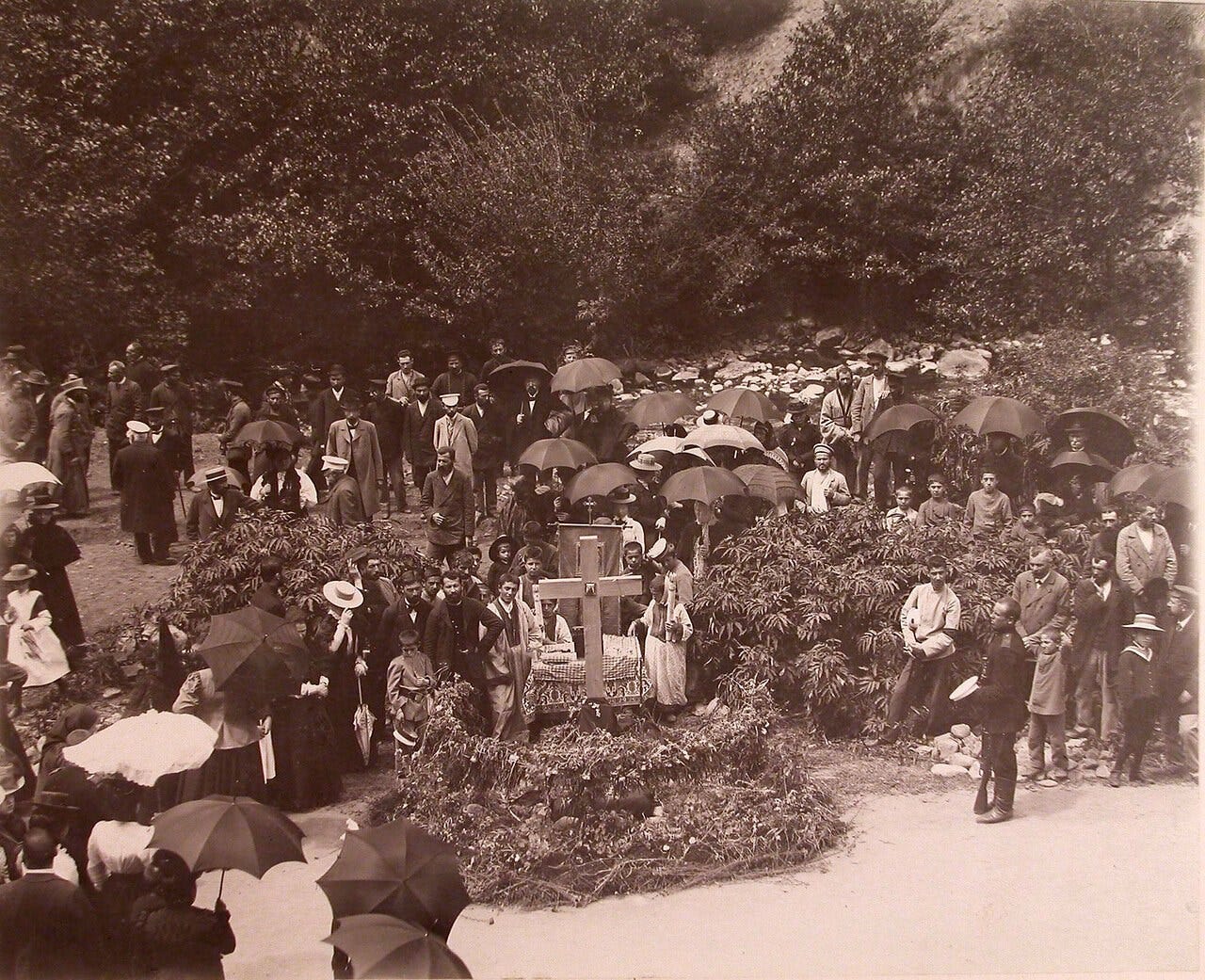
All along the route of the sad procession, the streets and buildings were covered in deep mourning. A particularly solemn and sad sight was presented by Nevsky Prospect, the buildings of which were almost completely dressed in mourning bunting.
Upon the arrival of the procession to the western door of the Peter and Paul Cathedral, the Emperor, together with the Imperial Family, the Minister of the Imperial Court and the Adjutant General, lifted the coffin and, preceding Metropolitan Anthony and the clergy, brought it into the cathedral and put it on a catafalque. Then, after a brief period Metropolitan Anthony performed a requiem, after which the reading of the Gospel began. Their Majesties and Their Imperial Highnesses then departed from the cathedral. All evening, all night and then all day on July 13th and the following night, the people were allowed to pray by the reposing body of the late Heir Tsesarevich.
On July 14th, the burial took place. After the liturgy and the funeral service, performed by Metropolitan Anthony along with all the highest clergy, the touching moment of the last farewell came. First came the Empress Mother: shedding tears, she bowed to the remains of her son. Behind his royal parent, the Sovereign Emperor bowed to the remains of his august brother. Then, in turn, the entire Tsarist Family came up to say goodbye. Thereafter, while singing “Holy God”, the Sovereign Emperor, grand dukes and minister of the Imperial Court raised the coffin and, following the preceding metropolitan, hierarchs, two protopresbyters and the confessor of the deceased Tsesarevich, brought the coffin to the grave, to the right of the altar, near the tomb of Emperor Alexander III.
The palace grenadiers standing at the edges of the grave accepted and lowered the coffin to its place of eternal rest. At this moment, at a signal, there was a farewell salute of guns. Over the open grave, the metropolitan gave the last words. Their Majesties and Their Highnesses then departed the Cathedral to the mournfully solemn sounds of “Eternal memory,” which ended the sad ceremony.
A temporary monument was erected at the site of the grave.”
Gallery of photos from the archive of Sergei Alexandrovich Borakchiev:



